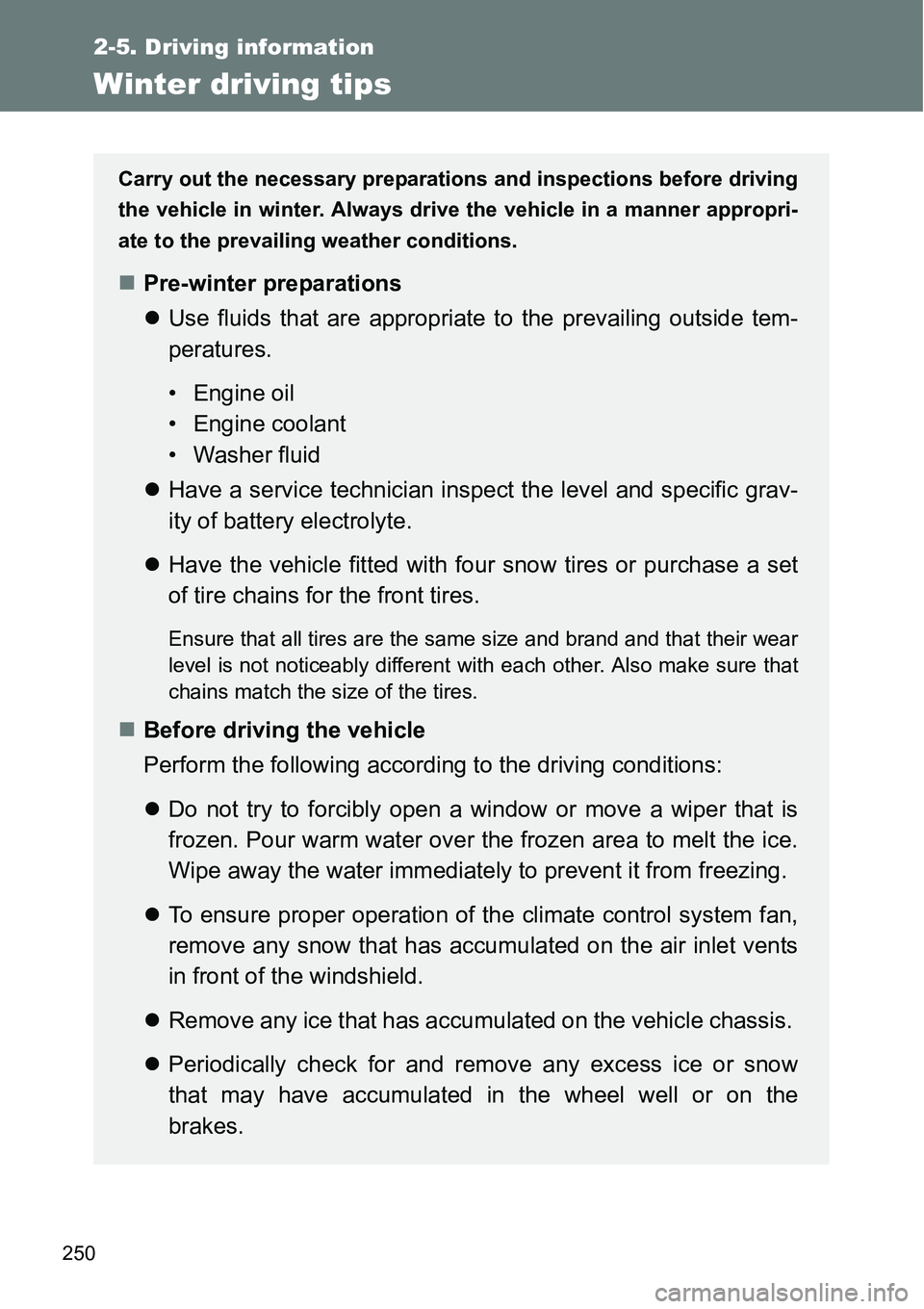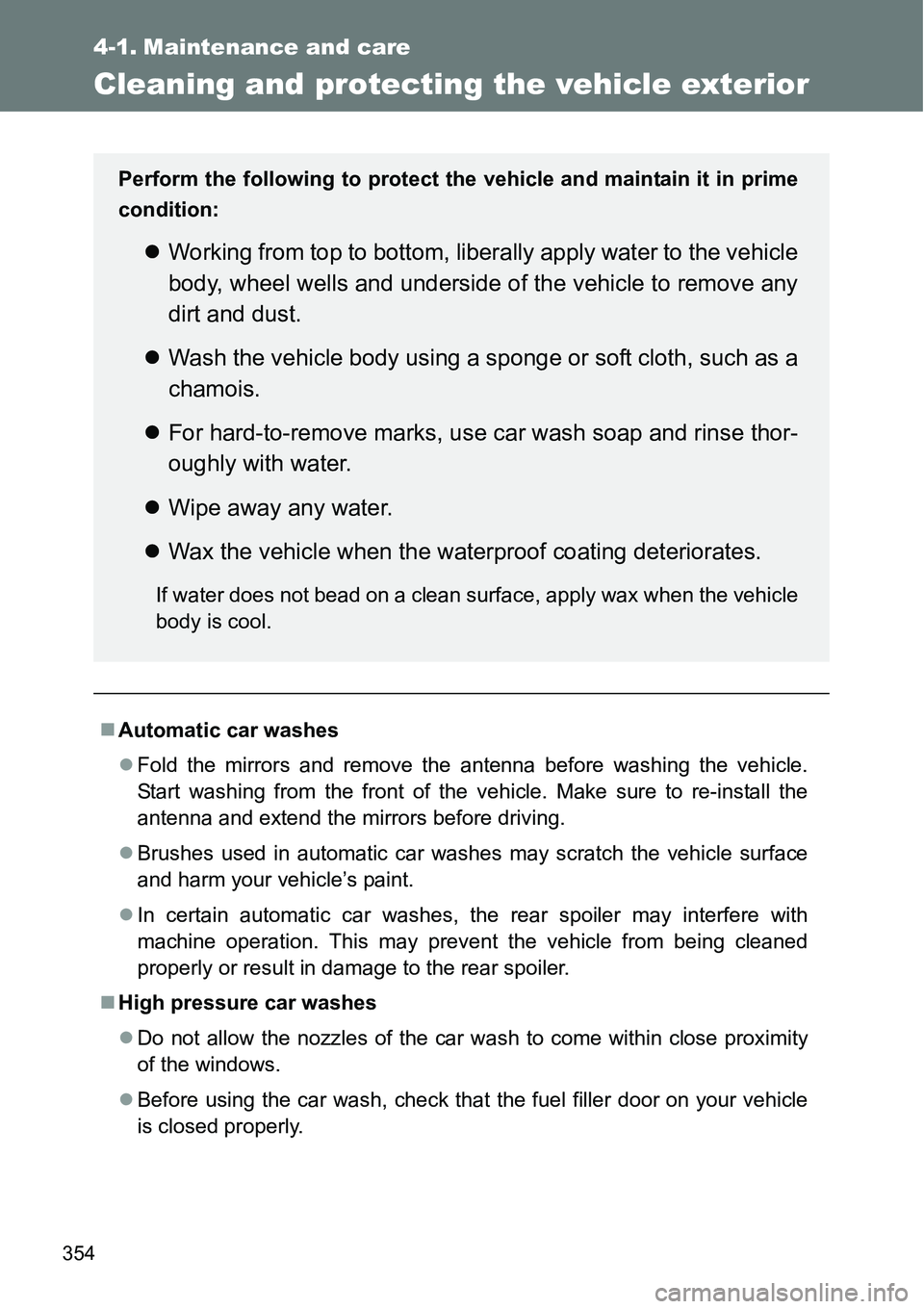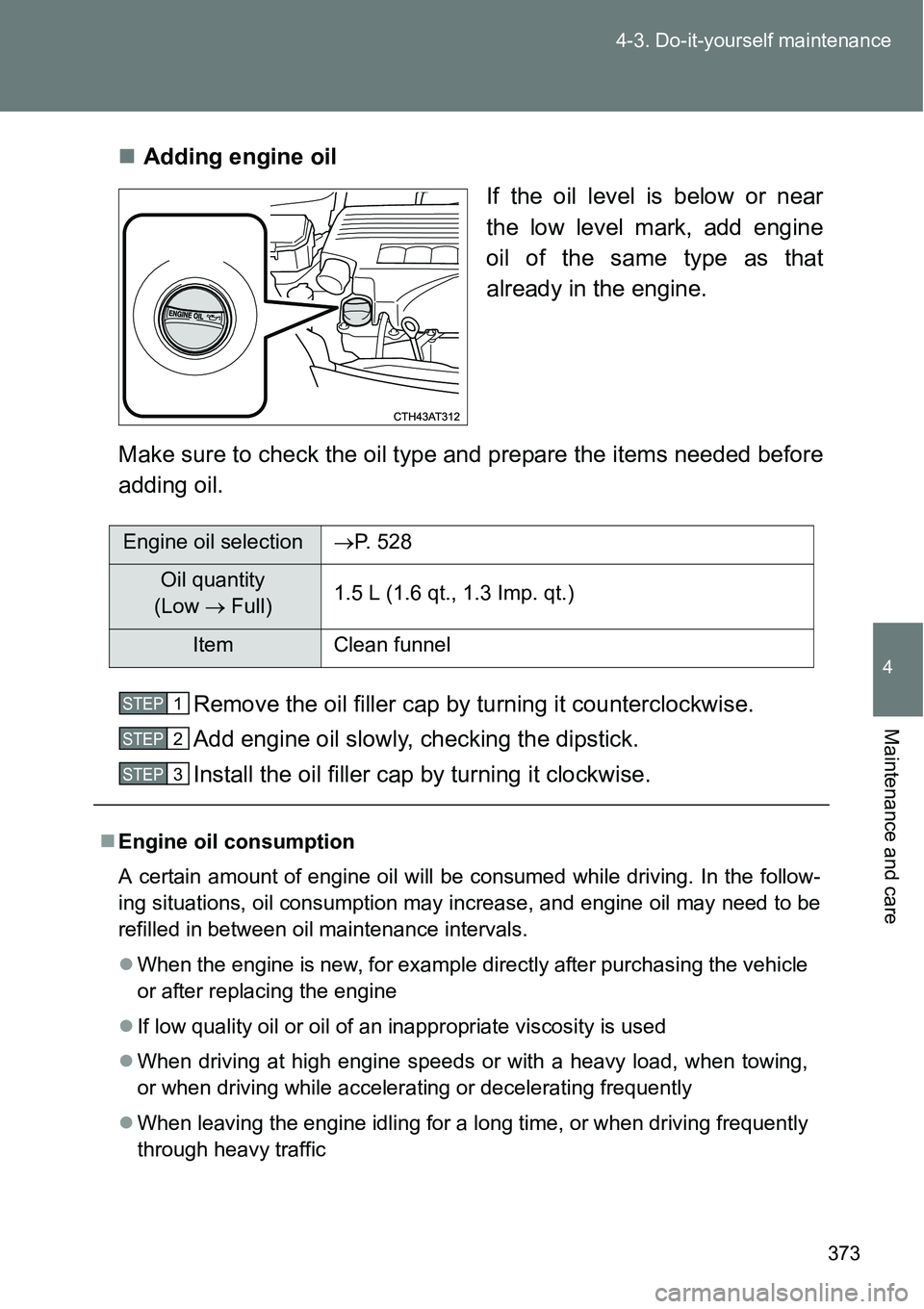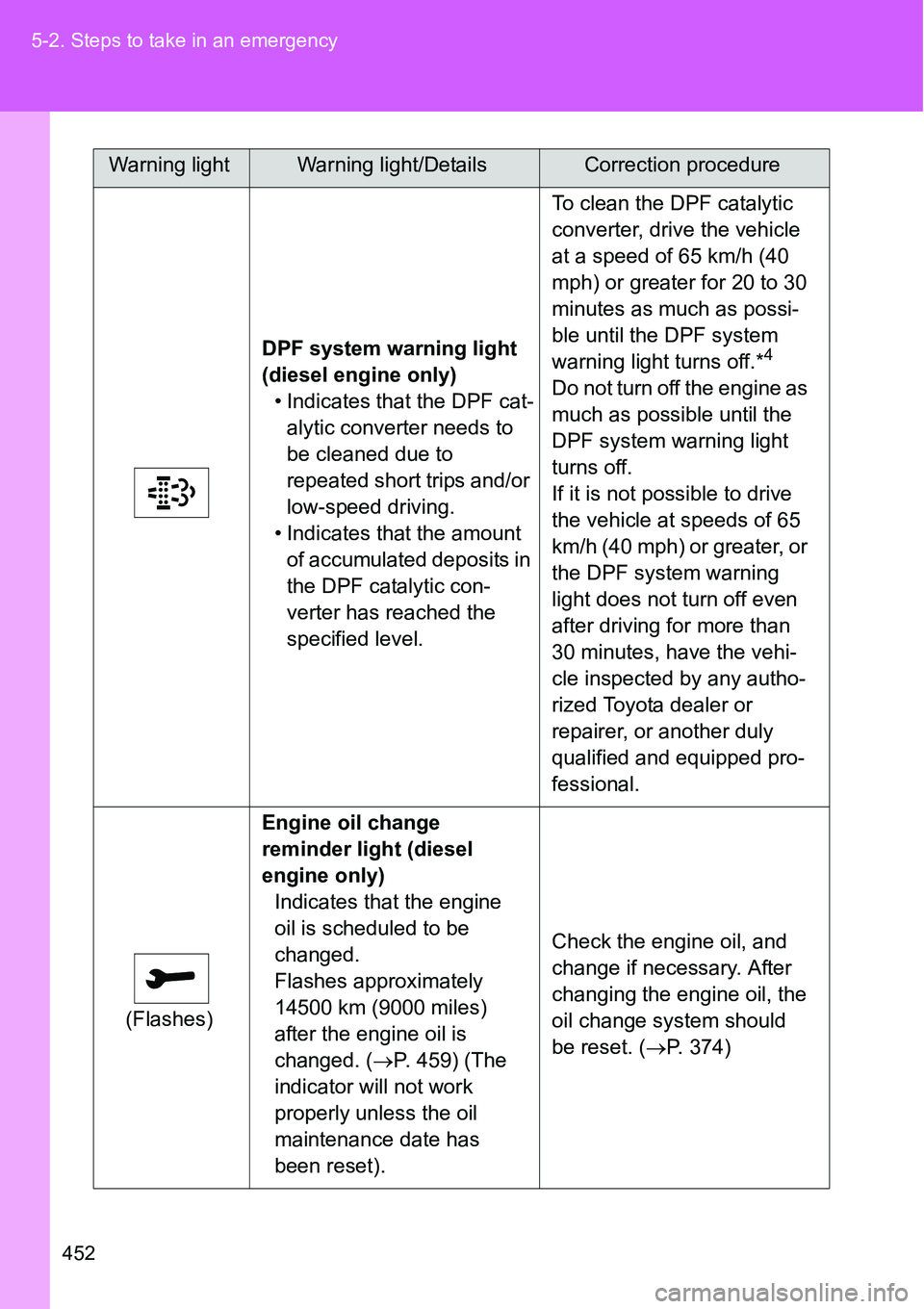Page 172 of 564
172 2-1. Driving procedures
NOTICE
When encountering flooded roads
Do not drive on a road that has flooded after heavy rain etc. Doing so may
cause the following serious damage to the vehicle:
Engine stalling
Short in electrical components
Engine damage caused by water immersion
In the event that you drive on a flooded road and the vehicle is flooded, be
sure to have any authorized Toyota dealer or repairer, or another duly quali-
fied and equipped professional check the following:
Brake function
Changes in quantity and quality of engine oil, transaxle fluid, etc.
Lubricant condition for the bearings and suspension joints (where possi-
ble), and the function of all joints, bearings, etc.
Page 250 of 564

250
2-5. Driving information
Winter driving tips
Carry out the necessary preparations and inspections before driving
the vehicle in winter. Always drive the vehicle in a manner appropri-
ate to the prevailing weather conditions.
Pre-winter preparations
Use fluids that are appropriate to the prevailing outside tem-
peratures.
• Engine oil
• Engine coolant
• Washer fluid
Have a service technician inspect the level and specific grav-
ity of battery electrolyte.
Have the vehicle fitted with four snow tires or purchase a set
of tire chains for the front tires.
Ensure that all tires are the same size and brand and that their wear
level is not noticeably different with each other. Also make sure that
chains match the size of the tires.
Before driving the vehicle
Perform the following according to the driving conditions:
Do not try to forcibly open a window or move a wiper that is
frozen. Pour warm water over the frozen area to melt the ice.
Wipe away the water immediately to prevent it from freezing.
To ensure proper operation of the climate control system fan,
remove any snow that has accumulated on the air inlet vents
in front of the windshield.
Remove any ice that has accumulated on the vehicle chassis.
Periodically check for and remove any excess ice or snow
that may have accumulated in the wheel well or on the
brakes.
Page 354 of 564

354
4-1. Maintenance and care
Cleaning and protecting the vehicle exterior
Automatic car washes
Fold the mirrors and remove the antenna before washing the vehicle.
Start washing from the front of the vehicle. Make sure to re-install the
antenna and extend the mirrors before driving.
Brushes used in automatic car washes may scratch the vehicle surface
and harm your vehicle’s paint.
In certain automatic car washes, the rear spoiler may interfere with
machine operation. This may prevent the vehicle from being cleaned
properly or result in damage to the rear spoiler.
High pressure car washes
Do not allow the nozzles of the car wash to come within close proximity
of the windows.
Before using the car wash, check that the fuel filler door on your vehicle
is closed properly.
Perform the following to protect the vehicle and maintain it in prime
condition:
Working from top to bottom, liberally apply water to the vehicle
body, wheel wells and underside of the vehicle to remove any
dirt and dust.
Wash the vehicle body using a sponge or soft cloth, such as a
chamois.
For hard-to-remove marks, use car wash soap and rinse thor-
oughly with water.
Wipe away any water.
Wax the vehicle when the waterproof coating deteriorates.
If water does not bead on a clean surface, apply wax when the vehicle
body is cool.
Page 372 of 564
372 4-3. Do-it-yourself maintenance
Engine oil
With the engine at operating temperature and turned off, check the oil
level on the dipstick.
Checking the engine oil
Gasoline engine: Park the vehicle on level ground. After turn-
ing off the engine, wait more than 5 minutes for the oil to drain
back into the bottom of the engine.
Diesel engine: Park the vehicle on level ground. After warm-
ing up the engine and turning it off, wait more than 5 minutes
for the oil to drain back into the bottom of the engine.
Holding a rag under the end, pull
the dipstick out.
Wipe the dipstick clean.
Reinsert the dipstick fully.
Holding a rag under the end, pull the dipstick out and check
the oil level.
Low
Normal
Excessive
The shape of the dipstick may
differ depending on the type of
vehicle or engine.
Wipe the dipstick and reinsert it fully.
STEP1
STEP2
STEP3
STEP4
STEP5
STEP6
Page 373 of 564

373 4-3. Do-it-yourself maintenance
4
Maintenance and care
Adding engine oil
If the oil level is below or near
the low level mark, add engine
oil of the same type as that
already in the engine.
Make sure to check the oil type and prepare the items needed before
adding oil.
Remove the oil filler cap by turning it counterclockwise.
Add engine oil slowly, checking the dipstick.
Install the oil filler cap by turning it clockwise.
Engine oil selectionP. 528
Oil quantity
(Low Full)1.5 L (1.6 qt., 1.3 Imp. qt.)
Item Clean funnel
Engine oil consumption
A certain amount of engine oil will be consumed while driving. In the follow-
ing situations, oil consumption may increase, and engine oil may need to be
refilled in between oil maintenance intervals.
When the engine is new, for example directly after purchasing the vehicle
or after replacing the engine
If low quality oil or oil of an inappropriate viscosity is used
When driving at high engine speeds or with a heavy load, when towing,
or when driving while accelerating or decelerating frequently
When leaving the engine idling for a long time, or when driving frequently
through heavy traffic
STEP1
STEP2
STEP3
Page 375 of 564
375 4-3. Do-it-yourself maintenance
4
Maintenance and care
NOTICE
To prevent serious engine damage
Check the oil level on a regular basis.
When replacing the engine oil
Be careful not to spill engine oil on the vehicle components.
Avoid overfilling, or the engine could be damaged.
Check the oil level on the dipstick every time you refill the vehicle.
Be sure the engine oil filler cap is properly tightened.
Engine oil (diesel engine only)
Using an engine oil other than ACEA C2 may damage the catalytic con-
verter.
Page 451 of 564
5
451 5-2. Steps to take in an emergency
When trouble arises
Low fuel level warning
light
Gasoline engine: Indi-
cates that remaining fuel is
about 5.8 L (1.5 gal., 1.3
Imp. gal.) or less.
Diesel engine: Indicates
that remaining fuel is
about 6.4 L (1.7 gal., 1.4
Imp. gal.) or less.Refuel the vehicle.
(On the instru-
ment cluster)Driver’s and front passen-
ger’s seat belt reminder
light (warning buzzer)*
3
Warns the driver and front
passenger to fasten their
seat belts.Fasten the seat belt.
(On the center
panel)Rear passengers’ seat
belt reminder lights
(warning buzzer)*
3
Warns the rear passen-
gers to fasten their seat
belts.Fasten the seat belt.
Low engine oil level warn-
ing light (diesel engine
only)
Indicates that engine oil
level is low.Check the level of engine
oil, and add if necessary.
Warning lightWarning light/DetailsCorrection procedure
Page 452 of 564

452 5-2. Steps to take in an emergency
DPF system warning light
(diesel engine only)
• Indicates that the DPF cat-
alytic converter needs to
be cleaned due to
repeated short trips and/or
low-speed driving.
• Indicates that the amount
of accumulated deposits in
the DPF catalytic con-
verter has reached the
specified level.To clean the DPF catalytic
converter, drive the vehicle
at a speed of 65 km/h (40
mph) or greater for 20 to 30
minutes as much as possi-
ble until the DPF system
warning light turns off.*4
Do not turn off the engine as
much as possible until the
DPF system warning light
turns off.
If it is not possible to drive
the vehicle at speeds of 65
km/h (40 mph) or greater, or
the DPF system warning
light does not turn off even
after driving for more than
30 minutes, have the vehi-
cle inspected by any autho-
rized Toyota dealer or
repairer, or another duly
qualified and equipped pro-
fessional.
(Flashes)Engine oil change
reminder light (diesel
engine only)
Indicates that the engine
oil is scheduled to be
changed.
Flashes approximately
14500 km (9000 miles)
after the engine oil is
changed. (P. 459) (The
indicator will not work
properly unless the oil
maintenance date has
been reset).Check the engine oil, and
change if necessary. After
changing the engine oil, the
oil change system should
be reset. (P. 374)
Warning lightWarning light/DetailsCorrection procedure